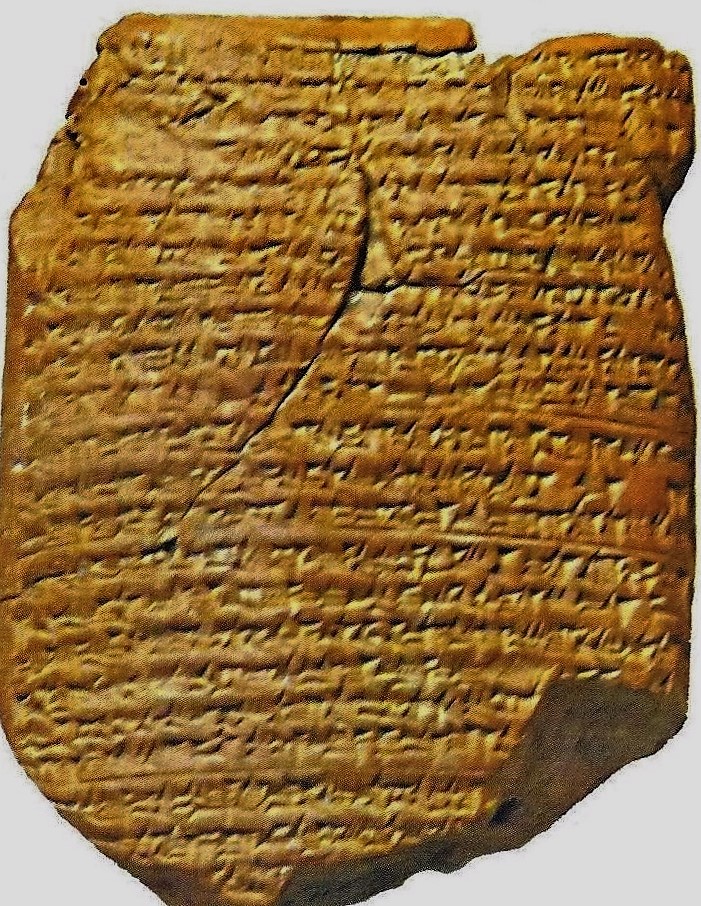03.02.01 1049-931 B.C. The United Monarchy
The term “United Monarchy” refers to the reigns of Kings Saul (reigned 1049-1009 B.C.), David (reigned 1009-969 B.C.), and Solomon (reigned 969-931 B.C.). A few short years after Solomon’s reign, the empire was divided.[1]
King Saul
The first king was Saul who united the twelve unfaithful, bickering, individualistic Israelite tribes into a single nation (1 Sam. 11:12-15). At the time, the land was still filled with idol-worshiping Canaanites who practiced child sacrifice and other horrible acts. He and his armies were, in effect, instruments of God to bring justice upon those who destroyed young innocent lives and practiced idolatry. These Canaanite tribes included the Amorites, Amalekites, the nomadic Midianites, and several others. But the most powerful enemies were the Philistines who lived in the modern-day Gaza Strip. Saul strengthened the confederacy and defeated nearly all of them, but failed to drive them out of the land.
However, sometimes too much success breeds failure, and he soon found himself with some moral failures. As a result, God began to raise David as his replacement. When Saul became aware of this, a civil war broke out. As was the custom of the time, kings normally asked their prophets to inquire of God for any directives they should follow. Ironically, while his name Sa ‘uli means ask insistently, as if asking Yahweh (God), he soon was asking counsel from the witch at Endor. Saul was a man whose life began with great promise and opportunity, but ended with a marked decline of his own spiritual and moral values, and finally, suicide. In contrast, David very frequently consulted God, but Saul rarely did. Their lives and the results of their leadership clearly reflect this significant difference.
King David
King Saul was followed by David, yet neither one was a pillar of moral strength, but David did have a repentant heart for which God honored him. His name in Hebrew is Dawid which means doubtful.[2] For whatever reason he was given that name, he certainly rose above it to become the champion of military commanders in Israel’s history. At a time when there was little or no change within any culture, he introduced massive radical changes to the benefit of the Israelites. He instilled a sense of nationalism and began the establishment of an international super-power which was completed by his son Solomon. So powerful was Judaea in ancient history that future generations, even in the time of Christ, reflected upon its history. In four military phases, David transformed his people from a dozen squabbling tribes to an international superpower and empire.
- The Israelites gave him loyalty and men for military strength. He combined all the tribes into a national kingdom. He conquered the Jebusite citadel of Jerusalem, made it his personal capital (1004 B.C.), and purchased the threshing floor where he constructed a sacrificial altar to honor God (1 Ch. 21:23). This was the same site where Abraham had offered his son to God centuries earlier.
- He consolidated neighboring territories. Since his hostile neighbors were the Philistines and Canaanites, he made a treaty with the Phoenicians of Tyre who were the world’s leading naval power.
- He defeated the tribes of Ammon, Moab, and Edom in the Trans-Jordan (western areas of modern Jordan).
- He established a multi-national empire.
As a result of his incredible victories, King David controlled all of the international trade that crossed his kingdom; a land bridge between the continents of Asia, Africa, and Europe. To the east was the great northern section of the Arabian Desert and to the west was the Mediterranean Sea. The major routes were the north-south route of the King’s Highway located east of the Jordan River; the Spice Route that went from Southern Arabia north along the eastern side of the Red Sea to the Mediterranean Sea to David’s shipping fleet; and the “Way of the land of the Philistines” (Ex. 13:17; Num. 20:17), an international highway that went from Damascus to Capernaum and southward on to Egypt.[3] Since bandits were numerous, caravans paid huge taxes for the protection of their goods, camels, and men.
Military success translated into economic success, not only for himself, but also for his people. David transported copper from Egyptian mines, silver from the Taurus Mountains in Asia Minor, silver and gold from East Africa, spices from Arabia, and purple dyes[4] from nearby Phoenicia. He utilized existing trade routes that had been established centuries before. The king simply conquered and took control of this existing wealthy enterprise.[5] The kingship of David also resulted in exceptional cultural changes, freedom, and wealth for the Israelites. No longer did they have to pay taxes, or tribute, to any foreign pagan king. Never in ancient history had a group experienced such a dramatic change within the short time frame of a single generation, as did the Israelites. Generally, sudden and dramatic social changes were extremely negative, usually resulting from a military conquest in which the defeated people were either killed or enslaved. Victors of any nation never accomplished what David created in a mere forty years.[6]
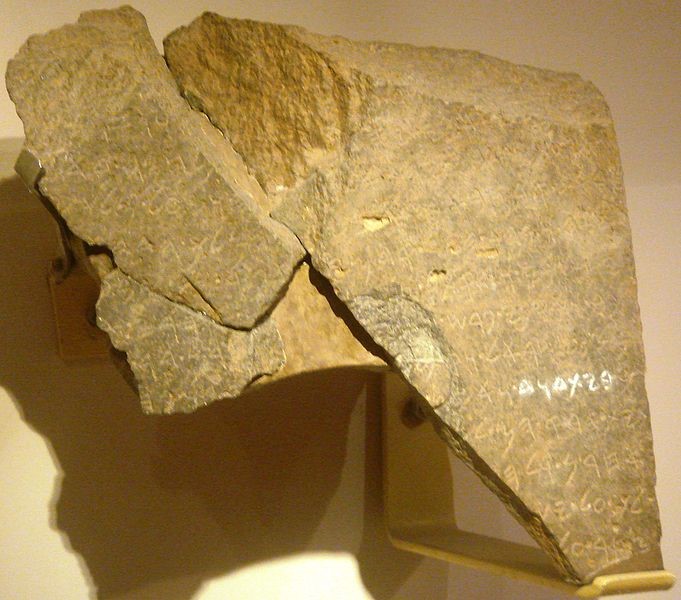
03.02.01.A. THE “KING DAVID FRAGMENT.” This inscription, known by archaeologists as the “Tel Dan Stele,” (a/k/a “Tel Dan Stela”) mentions the House of David on line 9. It consists of three fragments (discovered in 1993 and 1994) that refer to an unnamed king who boasts of his victories over the king of Judaea and his ally, the king of the “House of David.” It is the first artifact to be found in Israel that mentions the name David. Photo by Wikipedia Commons.
Translation of the “King David Fragment” inscription is as follows:
1.[ ]…[ ] and cut [ ]
2. [ ] my father went up [ ] he fought at […]
3. And my father lay down; he went to his [fathers]. Now the king of I[s]/rael had penetrated
4. into my father’s land before. [But then] Hadad made me king,
5. And Hadad marched before me. So I went forth from [the] seven[…]/s
6. of my rule, and I killed [seve]nty kin[gs] who had harnessed thou[sands of cha]/riots
7. and thousands of cavalry. [And I killed …]ram son of […]
8. the king of Israel, and I killed […]yahu son of [… the ki]/ng of
9. the House of David. And I made [their towns into ruins and turned]
10. their land into [a desolation …]
11. others and […Then…became ki]/ng
12. over Is[rael…And I laid]
13. siege against […]
King David Fragment Inscription[7]
The name “Hadad” is a pagan deity.[8] It should be noted that not all boastings by kings reflected truthful events. Amazingly, since the 18th century, critical scholarship has perpetuated the myth that King David never existed; that he is an imaginative figure of creative biblical writers.[9] However, they were silenced in 1993 and 1994 when a ninth century B.C. stele was discovered with the king’s name inscribed on it.[10] He was just as the biblical narrative describes. This inscription discredits critics who have stated that King David was a mythical figure who never existed.[11]
More importantly, in the ancient Middle East dignity was a sacred honor. King David established dignity and honor for God’s Chosen People. No longer were they recipients of degrading jokes. The Jewish people of the first century, who were reduced to economic slavery,[12] were expecting a Messiah who would to re-establish the David Empire as a wealthy international superpower and restore their dignity.
David was known not only for his administrative skills in forging twelve semi-disassociated tribes into an empire, but also for his many Messianic Psalms. For example, in Psalm 2 and 89 he wrote of a “Messiah” who would be the subject of much discussion. This occurred as predicted. He also described the death of Jesus in Psalm 22:14-18. Note the repeating themes or ideas of poetic Hebrew parallelisms.
14 I am poured out like water,
and all my bones are disjointed;
My heart is like wax,
melting within me.
15 My strength is dried up like baked clay;
and my tongue sticks to the roof of my mouth;
You put me into the dust of death.
16 For dogs[13] have surrounded me;
a gang of evildoers has closed in on me;[14]
They pierced my hands and my feet.
17 I can count all my bones;[15]
people stare and gloat over me.
18 They divided my garments among themselves,
and they cast lots for my clothing.[16]
Psalm 22:14-18
David’s literary works portray a man who rose from being a shepherd to a powerful monarch, yet one who experienced some horrific failures which were followed by the discovery of God’s love. He may not have realized that some of his words were “messianic.” In fact, not all of the messianic psalms were recognized in the first century as “messianic.” Some, such as the first line of Psalm 16:10 greatly perplexed the rabbis. Only after the resurrection of Jesus did this passage find fulfillment and understanding.
For You will not abandon me to Sheol;
You will not allow Your Faithful One see decay.
Psalm 16:10
The significance of King David to first century Jews and the identity of Jesus cannot be overstated. They were expecting the messianic Son of David to repeat all the great things King David had done. This was especially influential in first century Jewish thinking in light of the Davidic Covenant.[17] That covenant was similar to the Abrahamic Covenant, with the exception that it contained the additional clause of 2 Samuel 7:13-15, which promised dominion over alien people (2 Sam. 22:44-51; Ps. 2).[18] David was God’s anointed one (Ps. 2:2) and, as such, he was both priest and king (cf. Ps. 110); foreshadowing the function Jesus would hold in the future.[19] In essence, first century Jewish people expected a messiah, who would,
- Overthrow the oppressive Roman Empire
- Restore the Davidic Kingdom and make the Jewish nation an international super-power as King David had done.
- Although King David never performed miracles, in the course of time Jewish people came to believe that the messiah would perform three types of miracles known as “messianic miracles”[20] (to be discussed later).[21]
- Fulfill the Davidic Covenant, although there was considerable debate among various Jewish factions as to how that would materialize. His covenant featured four significant elements: [22]
- House
- Throne
- Kingdom
- Descendants
With four divine promises like these, no wonder that the Jews were anxious for their “son of David.” The history of Israel was never as glorious as it was during the reign of its three major monarchs. King Saul forged the birth of a great nation, but David completed the task. David instilled a sense of nationalism and began the establishment of an empire which was completed by Solomon. Yet while the ancient empire covered an enormous land mass, neither David nor Solomon encompassed all the land God promised to Abraham, Isaac, and Jacob.
Ironically, a few years before Jesus was born, Herod’s Kingdom became close in size to the Davidic Empire. This increased the speculation that the son of David would soon come and take control of the kingdom. But it was not to be.
In the first century, the Jews carefully observed Jesus and attempted to reconcile Him with their preconceived ideas of the son of David. But Jesus obviously did not fit those ideas of a military-messiah, and they certainly did not expect a Messiah would come to redeem them from their sins.

Once the military actions ceased and the Davidic Empire was established, God made a covenant with David that established his dynasty as God’s choice to rule His people forever (2 Sam. 7:4-17). This covenant, known as the Davidic Covenant, has three features.
- The dynasty of David would rule over the Promised Land forever (2 Sam. 7:10)
- David’s dynasty would be permanent (2 Sam. 7:11, 16).
- The kingdom established by the covenant would also be permanent (2 Sam. 7:13, 16).

In summary, there were two incredibly events that occurred at this time that were important to the Jewish people of the first century.
- The establishment of the Davidic Empire that was one of the most powerful empires of the ancient world and, more importantly,
- The establishment of the Davidic Covenant. This covenant contains the promise of an eternal king from the Davidic Dynasty. That king is Jesus.
King Solomon
The third king of the united monarchy was David’s son, King Solomon, who ruled during the golden age of Israel. His was a time of great prosperity and peace. He is best remembered for building the temple in Jerusalem that carried his name (2 Chron. 3:1). He enjoyed a lavish lifestyle, a huge army, and many building projects, all of which cost more than he earned from international trade and taxes from traveling caravans. He, therefore, imposed high taxes on his people and drove the nation into debt. That national debt became the primary reason his nation split into two independent sovereign states after his death. While the Lord gave him great wisdom, his decisions concerning high debt, and multiple wives and concubines clearly indicate that he failed to use that wisdom.
He expanded international trade that included a partnership with Hiram, the Phoenician king of Tyre. Together they operated a fleet of merchant ships in the Red Sea and along east Africa. Archaeological discoveries indicate that Solomon operated copper mines, which explains his close ties with Hiram. The Phoenicians were the world’s best craftsmen at copper smelting and refining as well as seamanship. Little wonder then, that the writer of First Kings said that the chief metalworker of bronze objects in the temple was a Tyrian by the name of Hiram (not related to the king of Tyre; 1 Kgs. 7:13-45).
The radical and successful transformation of the Israelite nation in such a short time came with a heavy price tag. The massive building project required not only taxation, but slaves as well. Solomon, to protect his new found wealth, enlarged his military which required more taxes and increased his national debt. Any nation that follows this economic cycle soon fails, as did Solomon’s Empire. Like Saul, he too fell into a moral and spiritual free-fall; his life ended in apostasy and idolatry (1 Kg. 12:1-20). He was blessed with God-given wisdom, but near the end of his reign he failed to use it. His life ended in tragedy and soon his empire would collapse.
Solomon’s influence in the days of Jesus was limited, unlike his popular father. Nonetheless, there are two points in the gospels that are worthy of consideration.
- The first century rabbis taught their students under temple porches called “Solomon’s colonnade.” Legend said that these columns stood in the first temple, and the rabbis said that maybe some of Solomon’s wisdom might fall upon their students.
- The rabbis also believed that Solomon’s power and wisdom could help them discern and expel demonic spirits.[23] That is why Jesus once said that “someone greater than Solomon is here” (Mt. 12:27).
[1]. Historians disagree slightly on the reigning dates, but each king reigned 40 years.
[2]. Cullman, “David.” 1:364.
[3]. By Roman times, the “Way of the land of the Philistines” was known as the Via Maris, and it went through the evangelical triangle where Jesus did most of His teaching.
[4]. According to Josephus, large quantities of purple (or scarlet) fabric were required for the temple curtains which were replaced every few years (Wars 6.8.3; 390). Some scholars believe that the purple (or scarlet) robe placed on Jesus (Mt. 27:28) was a soldier’s cloak.
[5]. Keller, W. The Bible as History. 4.
[6]. Cullman, “David.” 1:364-69.
[7]. The line-by-line translation by Lawrence J. Mykytiuk (published 1994).
[8]. http://en.wikipedia.org/wiki/Tel_Dan_Stele. Retrieved October 27, 2012; See also Bryant G. Wood, “New Inscriptions Mention House of David.” Bible and Spade. 119-21; and Avraham Biran and Joseph Naveh, “An Aramaic-Stele Fragment from Tel Dan.” Israel Exploration Journal. 43 (1993): 81-98.
[9]. King David is among fifty biblical names whose existence has been verified by archaeological studies in a published article by Lawrence Mykytiuk titled, “Archaeology Confirms 50 Real People in the Bible.” Biblical Archaeology Review. March/April, 2014 (40:2), pages 42-50, 68 (see 03.02.01.A below). This archaeological evidence confirms the historical accuracy of the biblical timeline. For further study see the website for Associates for Biblical Research, as well as Grisanti, “Recent Archaeological Discoveries that Lend Credence to the Historicity of the Scriptures.” 475-98.
[10]. http://en.wikipedia.org/wiki/File:Tel_dan_inscription.JPG, Retrieved October 27, 2012. See also Gary A. Byers. “The Tell Dan Stela.” 121.
[11]. For an interesting article on the fallacies of deconstructionists approach to biblical traditions, see Anson Rainey, “The House of David and the House of Deconstructionists: Davies is an Amateur Who ‘Can Safely Be Ignored.’” Biblical Archaeology Review. 20:5 (Nov. Dec. 1994.) 47.
[12] The subject of high taxation that resulted in economic slavery is presented by Josephus, Antiquities 17.11.2 (307-308). See also 02.03.03 “Economy” and 03.06.04 “4 B.C. The Death of Herod the Great.” God hates slavery, but it was part of the human predicament which is why He permitted slavery for a limited duration of seven years (Ex. 21:2 ff.; Deut. 15:12). In Amos 2:6 He brought judgment upon Israel for the enslavement or its own people. The way the Apostle Paul dealt with Philemon, demonstrates how God changed the slavery-based economy by changing the hearts of men. See also Sanders. “Jesus in Historical Context.” 430.
[13]. The term “dongs” or “Dogs” was a Hebrew nickname for non-Jewish people. This theme is repeated on the next line.
[14]. The psalm writer recorded the emotions of his life, no doubt totally unaware of the fact that he was recording prophetic words that would later be ascribed to Jesus.
[15]. The agony of dying on a cross stretched the human body to the point that it felt as if the joints were coming apart.
[16]. Exact description of what happened to Jesus. See Mt. 27:35.
[17]. Cullman, “David.” 1:368-69; Rogers, “The Davidic Covenant in the Gospels.” 458-78.
[18]. Fruchtenbaum, Israelology: The Missing Link in Systematic Theology. 629-33; Wiseman, “Abraham.” 1:6.
[19]. Merrill, Kingdom of Priests. 276; Terrien, The Elusive Presence. 295-96.
[20]. Fruchtenbaum, Messianic Miracles. 4; Fischer, The Gospels in Their Jewish Context. (Lecture on CD/MP3). Week 10, Session 2.
[21]. Messiah is spelled with a lower case “m” because the Jewish people had not applied deity to the name. Messiah with an upper case “M” is a reference to Jesus as God. For a description of the three messianic miracles, see the video link 06.03.08.V.
[22]. Fruchtenbaum, Israelology: The Missing Link in Systematic Theology. 632; Rogers, “The Davidic Covenant in the Gospels.” 458-78.
[23]. Josephus, Antiquities 8.2.5.
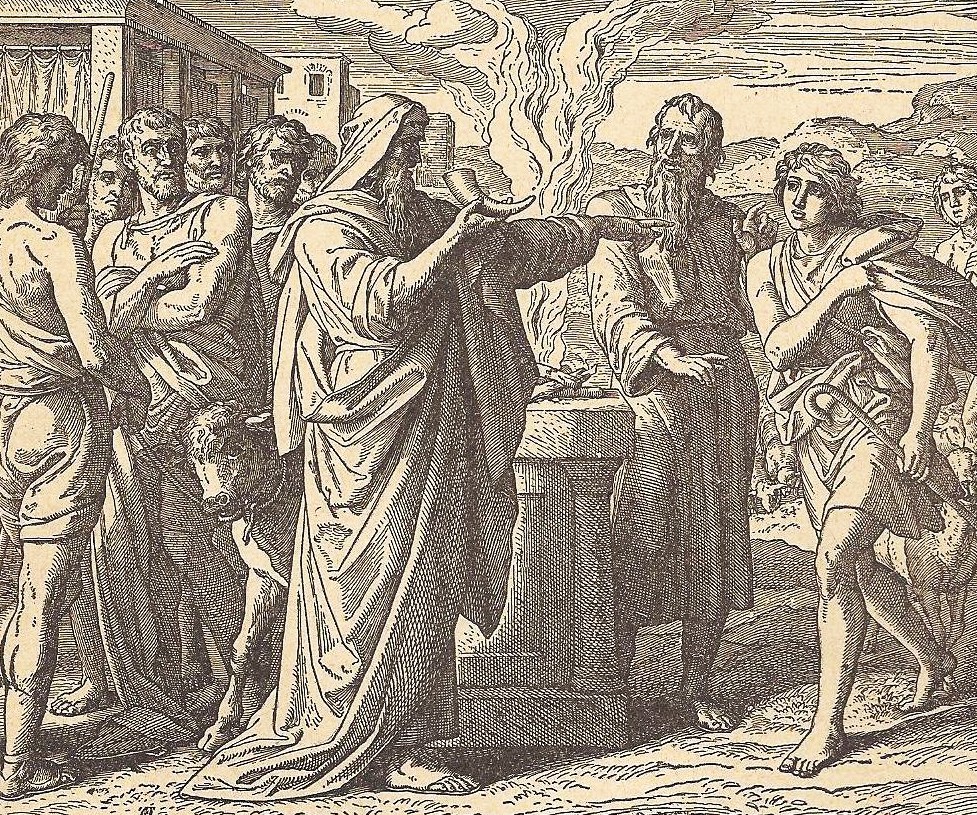




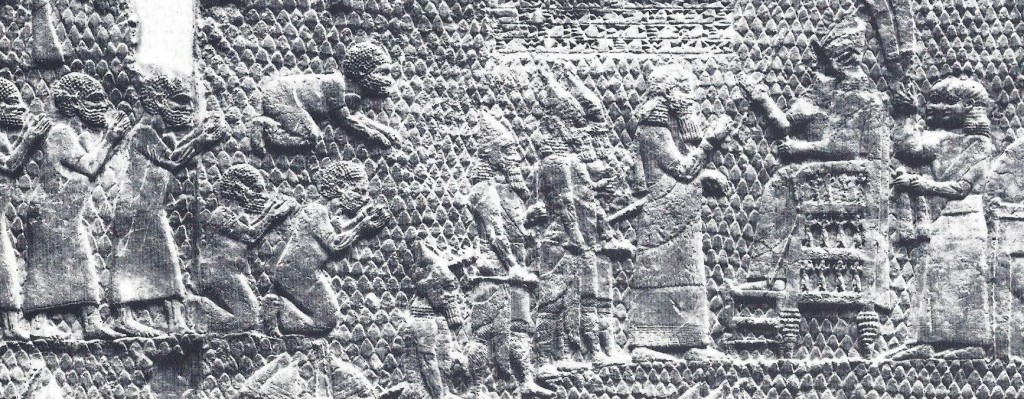
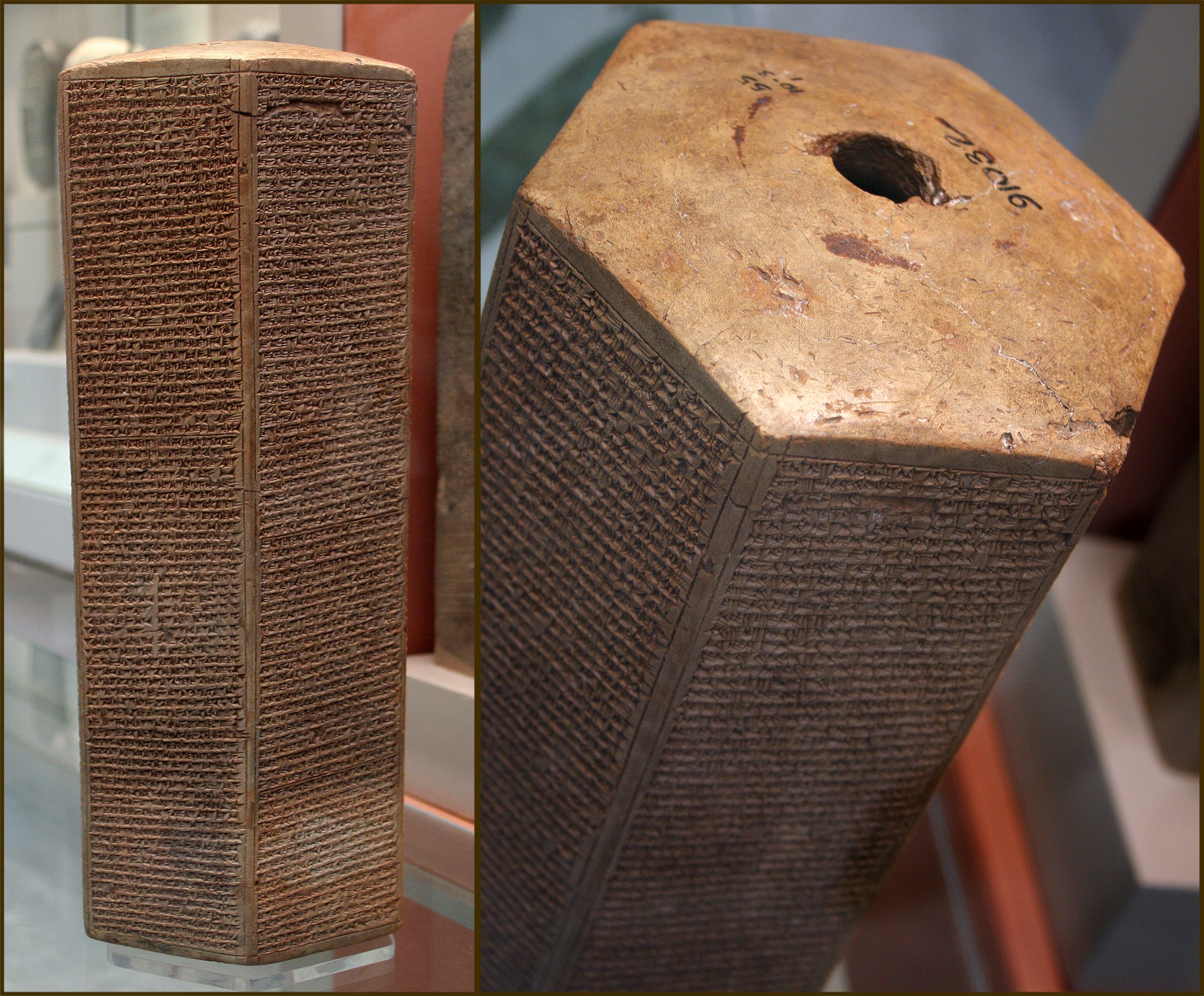 03.02.05.B. SENNACHERIB’S RECORD OF HIS SIEGE AGAINST JERUSALEM. The Assyrian king had his siege against King Hezekiah recorded on three clay prisms, known today as the Taylor Prism (shown above) and two Sennacherib Prisms. Other records include writings by Herodotus and Isaiah 36-37; 2 Kings 18 and 2 Chronicles 32. Photo by David Castor/Wikipedia Commons.
03.02.05.B. SENNACHERIB’S RECORD OF HIS SIEGE AGAINST JERUSALEM. The Assyrian king had his siege against King Hezekiah recorded on three clay prisms, known today as the Taylor Prism (shown above) and two Sennacherib Prisms. Other records include writings by Herodotus and Isaiah 36-37; 2 Kings 18 and 2 Chronicles 32. Photo by David Castor/Wikipedia Commons.